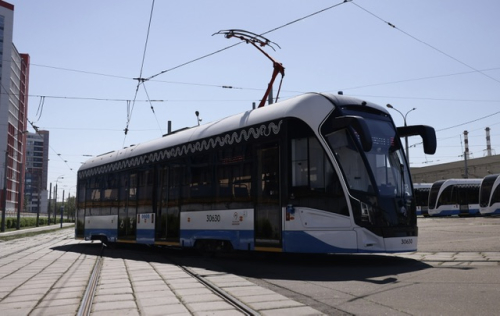
In the next phase, by the end of 2024, the tram will begin fully controlling the driving process in test mode, with the driver serving as a backup. In the third and final phase, by the end of 2025, the plan is to launch a fully unmanned tram without a driver at the controls for passenger trips.
The new transport is equipped with advanced LiDAR systems, providing highly accurate location data and a 360-degree view. The tram anticipates obstacles and stops in time if someone steps onto the tracks.
The software is developed by metro specialists without involving external companies. This unmanned technology is a unique European development owned by the Moscow Government.
Center for Electric Transport and Driverless Technologies. Moscow has also opened the Center for Electric Transport and Driverless Technologies. The new Center, located in the Kuntsevo district, spans 8,800 square meters. The facility provides more than 400 jobs and houses innovative structural subdivisions of Moscow Transport, namely the country’s first ticketing systems laboratory alongside offices dedicated to the development of electric and driverless transport.
The facility also includes teams specializing in system integration, technical support, and digital service development. Many of the Center’s employees are current students and graduates from the city’s leading universities.
In addition to the testing of Russia’s first driverless tram, the Center is also launching the Virtual Troika card, allowing fare payments via any smartphone. Moscow’s ticketing system is estimated to save the city 2.5 billion rubles annually by eliminating the need for printed tickets and receipts.
In addition, a biometric fare payment system is being introduced on the Moscow Central Diameters (MCD). The first phase of biometric fare payment is now available to all users.







